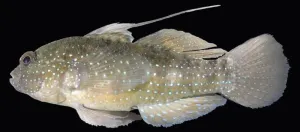(Press-News.org) A recent Supreme Court decision to block a federal rule curbing interstate air pollution further complicates efforts to reduce emissions and adds to an already disproportionate burden on “downwind” states, according to researchers at the University of Notre Dame.
“Toxic air pollution is really not as well known by the general public as you would hope, given its impact on human health,” said Paola Crippa, assistant professor in the Department of Civil and Environmental Engineering and Earth Sciences. “Most studies peg it as the, or at least one of the top three, largest causes of early human mortality. It cuts off about three years from global life expectancy. This is especially important for urban communities, where air pollution tends to be the highest.”
Air pollution poses a significant threat to respiratory health, is associated with asthma and can lead to chronic disease, cancer and premature death, according to the National Institutes of Health.
“Each year, air pollution kills 7 to 9 million people worldwide, including 200,000 Americans. And in the United States, much of this toxic pollution crosses state borders,” said Richard Marcantonio, assistant professor of environment, peace and global affairs in the University of Notre Dame’s Keough School of Global Affairs. “The Supreme Court’s decision pressed pause on a plan to help regulate this cross-state pollution.”
The ruling blocked the Environmental Protection Agency’s “Good Neighbor Plan,” housed under the Clean Air Act, which requires “upwind” states to implement improvement plans to reduce ground-level ozone and nitrogen oxide emissions from power plants and other industrial sources. Three states — Indiana, Ohio and West Virginia — along with various large industrial companies and trade organizations sued the EPA after the agency rejected those plans, which it determined to be insufficient, and moved to enforce its own plan. The EPA has stated that nitrogen oxide emissions decreased by 18 percent across 10 states where its plan was enacted in 2023.
Crippa and Marcantonio, with co-authors Danielle Wood, program director of the Notre Dame Global Adaptation Initiative, and Alixandra Underwood at the International Food Policy Research Institute, recently published a study exploring the Clean Air Act in the journal Environmental Management. Their study focuses particularly on Section 126, a measure by which downwind states can take action and petition the EPA to directly regulate sources of interstate air pollution.
The researchers examined all 13 petitions filed through Section 126 by downwind states between 2000 and 2022.
The study showed downwind states face several challenges in using the measure, ultimately rendering it ineffective. Downwind states can petition the EPA to directly regulate sources of air pollution, such as nitrogen oxide, sulfur dioxide and particulate matter, across state lines. However, those states experience lengthy response times, petitions are accepted infrequently and petitioners are required to collect proof showing improvement plans have failed — the kind of internal information from the source facilities that downwind states are not likely to get.
“In order to actually apply the good neighbor rule as it stands today, the burden of proof in court has been placed on the downwind states, and to date, they have been unsuccessful in court,” Crippa said. “If an upwind state is producing pollution that unequally affects a downwind state, they should be able to easily and effectively do something about it — that is the idea behind the federal government supporting federalism amongst the states. Right now, that’s not happening.”
Measuring and attributing air pollution across state lines is a challenge, Crippa said. How a region determines the source or sources contributing to poor air quality comes down to air quality models able to track the wind flow and pollution transport — critical to developing informed air quality assessments. These assessments play a significant role in alerting the public to poor conditions and increasing public awareness.
But, Crippa said, “This information is insufficient when the goal is to develop policies and implementation strategies to reduce local air pollution.” High pollution levels experienced in a local neighborhood may be only partially dictated by nearby emission sources, she said. “We are developing a new way of thinking about air quality management where regulations are not enforced based on political boundaries, but on dynamical physical boundaries that reflect the actual pollution dispersion boundaries.”
Crippa explained that new regulatory boundaries should be defined to include areas experiencing similar air quality conditions, rather than left to political and state boundaries. This type of boundary could ensure that current practices of exporting pollution to neighboring states through energy production and industry are significantly reduced. The research team is currently working on a companion study outlining proposals for air quality management based on these new boundaries.
The Supreme Court’s decision put the plan on hold, leaving the EPA and affected states without an immediate solution.
“It underscores how our regulatory system continues to be hamstrung when attempting to address some of the biggest challenges to its mission: to protect human health and the environment,” Marcantonio said. “Going forward, I hope policymakers will address this issue through an approach that centers human health first and protects the rights of downwind states.”
The study was conducted with support from the Lucy Family Institute for Data and Society.
END
Downwind states face disproportionate burden of air pollution
2024-07-31
ELSE PRESS RELEASES FROM THIS DATE:
Barriers designed to prevent saltwater intrusion may worsen inland flooding
2024-07-31
As Earth continues to warm, sea levels have risen at an accelerating rate – from 1.4 millimeters a year to 3.6 millimeters a year between 2000 and 2015. Flooding will inevitably worsen, particularly in low-lying coastal regions, where more than a billion people are estimated to live. Solutions are needed to protect homes, property and groundwater from flooding and the intrusion of saltwater.
Seawalls and similar infrastructure are obvious options to protect against flooding. In fact, cities such as New York and San Franciso have already thrashed out potential plans with the Army Corps of Engineers that will heavily rely ...
Vaping and smoking together increases lung cancer risk fourfold
2024-07-31
COLUMBUS, Ohio – People who both vape and smoke are four times more likely to develop lung cancer than people who just smoke, according to new study published by The Ohio State University Comprehensive Cancer Center – Arthur G. James Cancer Hospital and Richard J. Solove Research Institute (OSUCCC – James) and College of Public Health. These findings were consistent across gender and race.
This is the first study to provide evidence that smoking in combination with vaping increases the risk for cancer compared to smoking alone. Researchers ...
Scientists discover unexpected behavior in dimers of CO₂ molecules after ionization
2024-07-31
A team of international scientists has unveiled a surprising discovery in molecular physics, revealing unexpected symmetry-breaking dynamics in ionized carbon dioxide dimers. Published in Nature Communications, the study provides new insights into the structural changes that occur when these molecular clusters are exposed to extreme ultraviolet (EUV) radiation.
An international team of scientists, led by Profs. Daniel Strasser and Roi Baer from The Hebrew University of Jerusalem, has made an important discovery in molecular physics, revealing unexpected symmetry-breaking dynamics in ionized carbon dioxide dimers. Published in Nature Communications, ...
Cracking the carb code: Researchers create new glycemic index database to improve dietary awareness
2024-07-31
Karen Della Corte, BYU nutrition and dietetics professor, recently authored a new study, published in The American Journal of Clinical Nutrition, that developed a national glycemic index (GI) and glycemic load (GL) database to offer insights into the evolving quality of carbohydrates consumed in the United States, something that hadn’t been done previously.
The GI is a scale used by public health researchers to categorize the quality of the carbohydrates. High-GI foods like white flour and sugar cereals cause a “sugar rush” that can negatively impact metabolic health. ...
Military health research reveals potential pathway to reducing youth suicide
2024-07-31
Military-connected youth that show elevated risk for suicidal ideation and suicide plans exhibit lower rates of gun-carrying, according to new research from emergency medicine faculty at the University of Colorado School of Medicine.
The analysis, published in JAMA Network Open July 31 by members of the CU Center for Combat Medicine and Battlefield (COMBAT) Researchand Firearm Injury Prevention Initiative (FIPI), offers promising insight for potentially reducing gun-carrying among youths with recent suicidal ideation or plans. Researchers are also interested in how relevant strategies in military communities ...
Cannabinoid CBG reduces anxiety and stress in first human clinical trial
2024-07-31
PULLMAN, Wash. — A lesser-known cannabinoid that is gaining in popularity Cannabigerol (CBG) effectively reduced anxiety in a clinical trial without the intoxication typically associated with whole plant cannabis. It may even have some memory enhancing effects, according to a new study in Scientific Reports.
For the study, Carrie Cuttler, an associate professor of psychology at Washington State University, and colleagues conducted the first human clinical trial investigating the acute effects of CBG on anxiety, stress and mood.
The research revealed that 20 mg of hemp-derived CBG significantly reduced feelings of anxiety at 20, ...
University hospitals nationally recognized for high-quality stroke care
2024-07-31
CLEVELAND — University Hospitals (UH) has received numerous American Heart Association Get With The Guidelines® - Stroke quality achievement awards for ensuring stroke patients receive the most appropriate treatment according to nationally recognized, research-based guidelines, ultimately leading to more lives saved and reduced disability.
Stroke is the No. 5 cause of death and a leading cause of disability in the U.S. A stroke occurs when a blood vessel that carries oxygen and nutrients to the brain is either blocked by a clot or bursts. When that happens, part of the brain cannot get the blood and oxygen it needs, so ...
Humans are born to run
2024-07-31
The 2024 Summer Olympics are in full swing. One of the marquee events is of course the marathon, a grueling test of fitness and athleticism.
When it comes to endurance running, humans are among the very top mammals in their athletic prowess. While we may not be the best sprinters in the animal kingdom, we can run steadily for long distances, even in hot weather. Our locomotor muscles are dominated by slow-twitch, fatigue-resistant fibers and our unique ability to sweat allows our bodies to effectively dissipate heat.
Humans are so good at endurance running, it seems we were born to do it. But why?
A theory of endurance
In ...
Medicaid enrollees struggle to find psychiatric care
2024-07-31
Many people enrolled in Medicaid who require psychiatric care have difficulty accessing clinicians in a timely manner despite the higher need in this population, according to a study by researchers at Weill Cornell Medicine.
The results published July 31 in JAMA found that few psychiatrists and other mental health professionals who are listed as accepting new patients enrolled in Medicaid are actually reachable and have appointments available. In cases when appointments could be made, wait times sometimes extended up to six months. The research was conducted by first author Dr. Diksha Brahmbhatt (M.D. ’24), who is now a resident physician at Brigham and Women’s ...
Smithsonian scientists devise method to secure Earth’s biodiversity on the moon
2024-07-31
New research led by scientists at the Smithsonian proposes a plan to safeguard Earth’s imperiled biodiversity by cryogenically preserving biological material on the moon. The moon’s permanently shadowed craters are cold enough for cryogenic preservation without the need for electricity or liquid nitrogen, according to the researchers.
The paper, published today in BioScience and written in collaboration with researchers from the Smithsonian’s National Zoo and Conservation ...





